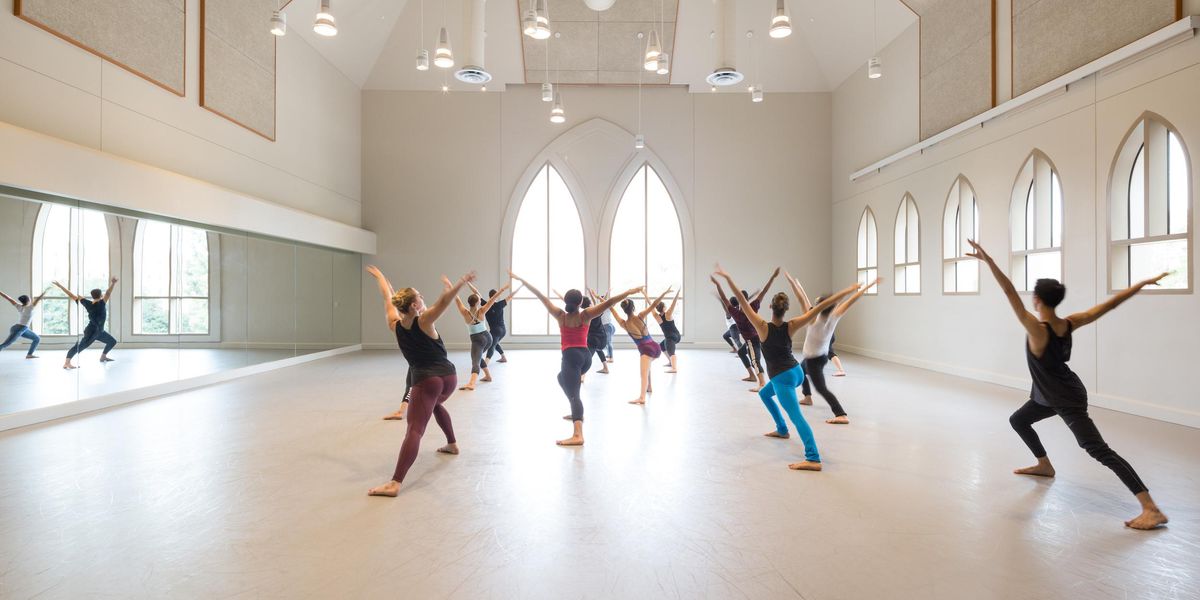On Broadway: Disappearing Act
Dance takes a supporting role in new shows.
Dance as backdrop: Caissie Levy in the London production of
Ghost
We all tend to think of Broadway musicals as occasions for dance, and there’s no denying that the genre has furnished us with wonderful, memorable, classic examples of jazz, tap, even ballet. But there’s always been a breed of show that dispensed with choreography as we usually understand it—those with small casts and squeezed budgets, those with experimental concepts or dramaturgical constraints, those with all of the above. More and more, however, we’ve started seeing something in between—shows that have plenty of dancing, but little, or nothing at all, that could stand independently as a “number.”
A list of such non-dance dance shows (there’s gotta be a better name for them) would include Spring Awakening, which won Bill T. Jones a choreography Tony, and American Idiot, for which Steven Hoggett was nominated. The season that just ended brought us Ghost: The Musical, whose dance ensemble merges with flashing lights and other razzle-dazzle stage effects that simultaneously amplify and diminish the dance. We’ve had the Stratford Shakespeare Festival’s production of Jesus Christ Superstar, which is through-sung and through-danced, but which only rarely puts dancers front and center. And we’ve had Once, whose rollicking dances are performed by the same people singing the songs, acting the roles, and playing the instruments—often at the same time.
Not surprisingly, the choreographers creating these nontraditional shows come from nontraditional backgrounds. Australia native Ashley Wallen, who choreographed Ghost for director Matthew Warchus, is, like the show’s composers (Dave Stewart and Glen Ballard), a pop music guy. He started his career as a teenager, dancing behind touring rock acts, and went on to choreograph commercials and music videos. His credits include the 2009 T-Mobile commercial shot at a London train station that spawned the flash-mob genre.
Hoggett, the choreographer of Once, came to musicals via Britain’s physical theater scene (see “On Broadway,” April 2010), with no dance training—only with the conviction, arrived at after nearly two decades of running the theater company Frantic Assembly, that movement can go beyond conveying an esthetic to communicating meaning. Even Lisa Shriver, the choreographer of Jesus Christ Superstar, who’s worked on an assortment of Broadway shows, is an outsider of sorts, having landed in theater by way of an injury that derailed her ballet career (see “On Broadway,” April 2006).
Their shows, and of course their dances, are very different. And they all had different problems getting dance into those productions. Ghost, which made the move to Broadway in the midst of a successful run in the West End, is a lot dancier here than it was there. “When we did the show in London,” Wallen says, “we had a smaller cast, and I probably only had about three that could really dance. When we got to New York, I pushed for extra ensemble people, and now I’ve got a great cast who really dance.” The story, based on the hit 1990 movie, focuses on four people, and most of the dance involves everyone else—Wall Street workers, subway riders, pedestrians. Much of it involves simple moves done in unison, but, he says, “I threw a few double tours in there.”
There are no double tours in Once, which became a surprise hit after moving to Broadway from downtown. Like Ghost, it’s based on a movie with a very intimate focus, a romance between its composers, Dubliners Glen Hansard and Marketa Irglova. But instead of telling the story in a glitzy, high-powered show biz frame, director John Tiffany stayed small, setting it in a Dublin pub with actor/singers who double as the band. Even before Hoggett took the job, he told Tiffany that there were iconic songs in the movie—especially the 2008 Oscar winner “Falling Slowly”—that he wouldn’t choreograph. As for the rest, he knew he’d be working with performers whose musical and dramatic skills would outshine their dance ability. He was going to have to teach the banjo player, the violinists, and the rest how to move.
Shriver’s cast for Jesus Christ Superstar was drawn from the Stratford repertory company, so dance was part of everyone’s job. Some of them, she says, “are among the best dancers I’ve ever worked with.” Her challenge was to create movement that would look at home in a story set in 33 AD and also in 2012. “My goal was not to have it fit in any specific time period, but to allow the audience to identify with it.” So she surrounded the Andrew Lloyd Webber/Tim Rice songs with styles from expressionist modern dance to hip hop. For the most part, however, her choreography is part of the background.
Ironically, these shows may represent the ultimate triumph of the musical-theater revolution so famously ushered in by Agnes de Mille—dance that is so integrated into the fabric of a show that one way or another, it disappears from view. You can cheer, or you can cry, or maybe do a little of both.
Sylviane Gold writes on theater for The New York Times.




